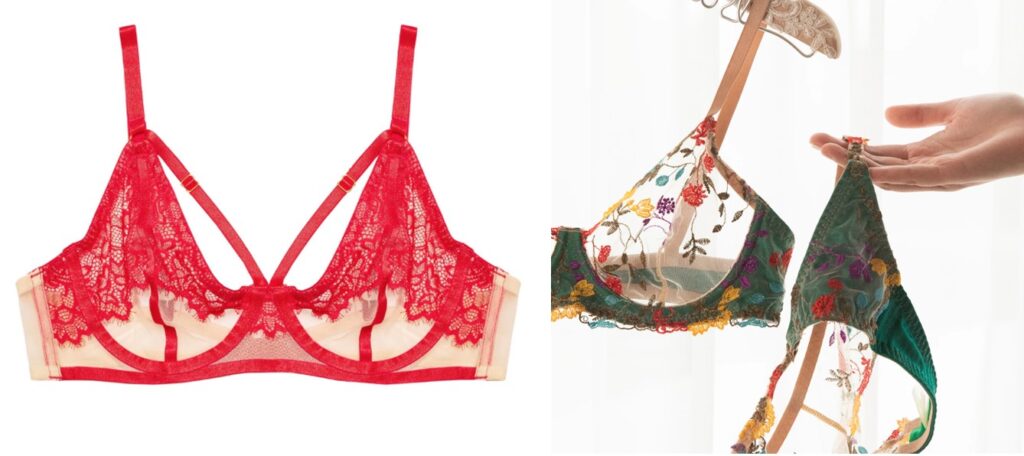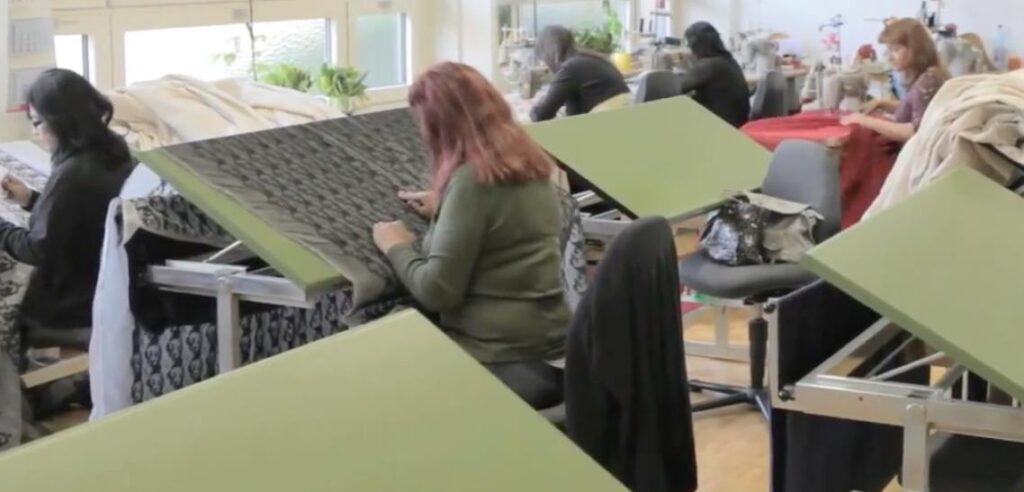
CREATIVITY OR COST?
Embroidery vs. Lace: Which is Right for Your Intimate Apparel Line?
Embroidery and lace are two popular techniques that are often used in the production of intimate apparel. While they may appear similar in appearance, they are fundamentally different in their production methods and design potentials. Embroidery vs. Lace: so what sets them apart, and which one is right for your line? Let’s explore the differences between the two and the factors that could influence your decision.

Can you say which is embroidery and which is lace?
EMBROIDERY VS. LACE: WHAT’S THE DIFFERENCE?
Embroidery is a beautiful design stitched on a background, often on tulle or any other fabric. In comparison to lace, embroidery can be comprehended in more colours and with more 3D effects. Designers can play with the repetition of the design or leave blank spaces for visual effects. The creativity is nearly unlimited in embroidery.
On the other hand, lace is produced in one piece like a fabric. It’s a delicate and intricate web of patterns that is often made from fine threads and requires specialized machinery to create. Lace also has a unique look that is not easily replicated with other techniques.

DIFFERENT EMBROIDERY TECHNIQUES
There are several types of embroidery techniques that can be used in intimate apparel:
- Schiffli Embroidery: Schiffli embroidery machines can produce a wide range of designs, from fine and elegant to fashionable with metallic coating and other finishes. The designs can be stitched onto fabric in lengths ranging from 2 to 20 yards.
- Multi-Head Embroidery: This technique involves using multiple needles simultaneously, allowing for greater color variation and design possibilities. The number of colors that can be used in a design depends on the machine’s repeat, which is the distance between two needles. The larger the repeat, the more colors can be used in the design.
- Thermo Cut or Laser Cut: This technique involves cutting away parts of the fabric using a hot needle or laser, creating unique and intricate patterns.
- Overprinted: This technique involves using a black tulle or mesh fabric, with the overprint being visible only on the embroidered design, creating a striking contrast.
- Chintzed or Calandered Finish: This technique adds a shiny finish to the embroidery, creating a luxurious and glamorous look.
Embroidery can also be combined with other techniques, such as applications, superposed loose 3D effects, and change threads, to add further depth and complexity to the design.

FACTORS TO CONSIDER
When deciding between embroidery and lace, there are several factors to consider, including but not limited to:
- More Stitches: Embroidery characteristically requires more stitches, which can increase the production cost.
- Expensive Base Fabrics: Using expensive base fabrics can also drive up the production cost.
- More Yarn Colours: Using more yarn colours can make embroidery more expensive.
- Bigger Design and Repeat: A bigger design and repeat can increase the production cost.
- Thermo Cut: Making thermo cut requires more stitches, which can drive up the cost of production.
- Clip Fabric Up and Down for Applications: This technique also increases production cost.
- Thread Cuttings: Making designs with a lot of thread cuttings can also increase the cost of production.
Think about the style you want and your budget while making a decision. Embroidery is a fantastic choice if you’re looking for a broader range of colors and 3D effects, but the cost can add up quickly due to the number of stitches and other factors. In contrast, lace is a more affordable option that can still lend an air of sophistication and elegance to your intimate apparel. With these factors in mind, now you can surely make an informed decision for your line. What do you say?
